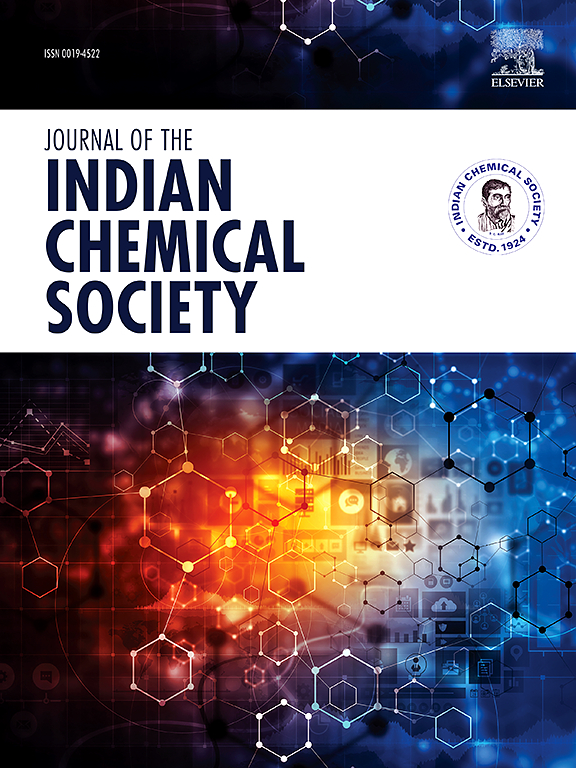A novel phytosynthesized Zr doped SnO2 nanocomposite for textile effluent purification and in-vitro biological activities
IF 3.2
4区 化学
Q2 CHEMISTRY, MULTIDISCIPLINARY
引用次数: 0
Abstract
Ecosystems and public health are seriously threatened by environmental pollution brought on by synthetic colours and harmful microbes. The current study aims to create a multipurpose nanomaterial with improved antioxidant, antibacterial, and photocatalytic qualities for possible environmental remediation to address this problem. Herein, a novel Zr-SnO2 nanocomposite was effectively produced via a green approach. This effort aims to assess the synthesized composite's structural, optical, and functional characteristics and investigate how well it degrades organic dyes and suppresses microbiological growth. XRD analysis confirmed its crystalline nature, which showed an average crystalline size of 26.91 nm. Agglomerated spherical particles with the proper elemental composition were seen in FE-SEM images. The optical characteristics were ascertained using PL and UV-Vis spectroscopy, including a bandgap of 2.73 eV. Both cationic (Crystal Violet) and anionic (Brilliant Blue) dyes were used to measure photocatalytic activity; after 90 min in the sun, the degradation efficiencies were 85 % and 98 %, respectively. The composite also demonstrated 94 % antioxidant and intense antibacterial activity against S. aureus and E. coli. These results demonstrate the green-synthesized Zr-SnO2 nanocomposite's potential as a valuable substance for environmental applications.

求助全文
约1分钟内获得全文
求助全文
来源期刊
CiteScore
3.50
自引率
7.70%
发文量
492
审稿时长
3-8 weeks
期刊介绍:
The Journal of the Indian Chemical Society publishes original, fundamental, theorical, experimental research work of highest quality in all areas of chemistry, biochemistry, medicinal chemistry, electrochemistry, agrochemistry, chemical engineering and technology, food chemistry, environmental chemistry, etc.

 求助内容:
求助内容: 应助结果提醒方式:
应助结果提醒方式:


